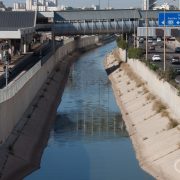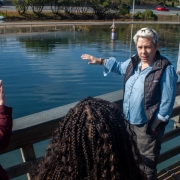Map: U.S. Coal-Fired Power Plants Ranked By Water Pollution
Report identifies worst offenders by discharges of arsenic, lead, and mercury.
The 10 coal-fired power plants discharging the most arsenic, lead, and mercury into waterways in 2015 are shown, by pollutant. Click on the arrows in the upper left corner to view a map legend. Click on the circles to view more information about each power plant and its discharges. Map by Tom McIlwaine / Circle of Blue. Source: Environmental Integrity Project
Nearly a year ago, the U.S. Environmental Protection Agency finalized its Steam Electric Power Generating Effluent Guidelines. The new rules set the first federal limits on the amount of toxic metals — including arsenic, lead, mercury, and selenium — that can be discharged in wastewater from power plants, which are some of the biggest industrial water polluters in the country. Almost 100 public drinking water intakes and more than 1,500 public wells in the United States are located near discharges from power plants, according to the EPA. The agency says the substances covered by its guidelines can contaminate fish and drinking water supplies, in some cases leading to cancer, cardiovascular disease, neurological disorders, kidney and liver damage, and reduced IQs in children. When the rules are fully implemented, between 2018 and 2023, they will cut pollution released into waterways by an estimated 635,000 metric tons (1.4 billion pounds) each year.
While the guidelines apply to all steam electric power plants, including nuclear and natural gas plants, a report released this month by the Washington, D.C.-based Environmental Integrity Project focused on the amount of pollution currently discharged by coal-fired power plants. The report analyzed data from 216 coal plants contained in the EPA’s 2015 Toxics Release Inventory and identified those that are releasing the most arsenic, lead, and mercury into waterways. The rankings, shown in the map above, are relative to the other plants that were analyzed and do not indicate that the power stations were in violation of their environmental permits.
A news correspondent for Circle of Blue based out of Hawaii. She writes The Stream, Circle of Blue’s daily digest of international water news trends. Her interests include food security, ecology and the Great Lakes.
Contact Codi Kozacek









